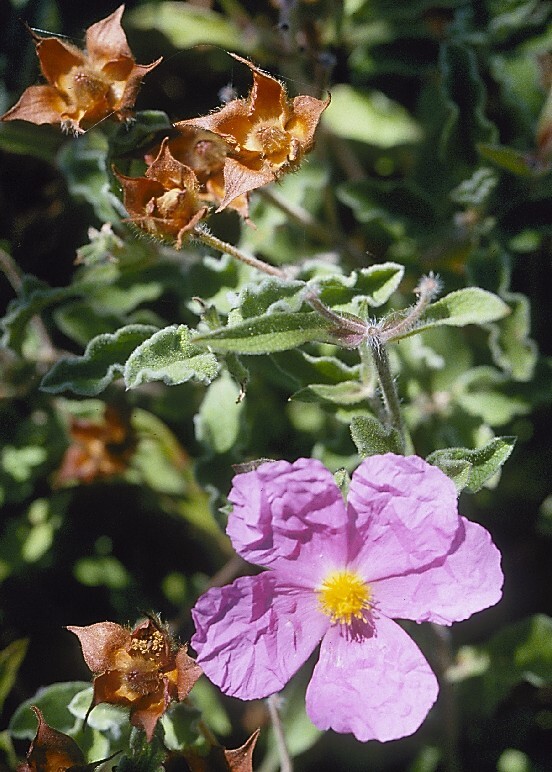Cistus creticus
L.Rounded shrubs to c. 1 m high with long simple hairs over shorter stellate and glandular hairs. Leaves sessile or petiolate, elliptic to obovate, becoming narrower towards inflorescences, 1.5–3(–5) cm long, 5–10(–15) mm wide, grey-green above, paler below; apex obtuse; margins often undulate; 3-nerved at base. Inflorescence a terminal cyme of up to 6 flowers; peduncles 5–40 mm long; flowers c. 5 cm diam.; sepals 5, broadly ovate, the outer sepals broader and cordate, persistent; petals obovate, c. 25 mm long, pink, yellow at base; style 3–4 mm long. Capsule c. 9 mm long, silky-villous; seeds 1–1.5 mm long, brown, wrinkled. Flowers Nov.–Dec. (3 records).
LoM, MuM, VVP, DunT. Also naturalised Tas. Native to the Mediterranean region, commonly cultivated, with planted populations known to persist near Dunkeld and Clunes. .
Often hybridised with Cistus albidus L. in cultivation to produce C. × canescens. It is unclear if the origin of all plants in Victoria is of this species or the various cultivated hybrid back-crosses with C. albidus and or C. × canescens.
 Spinning
SpinningClarke, I. (2005). 'Wild' Cistus L. (Cistaceae) in Victoria - future problem weeds or benign escapees from cultivation?. Muelleria 21: 77–86.

